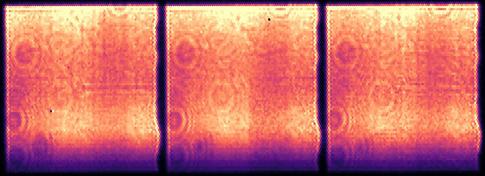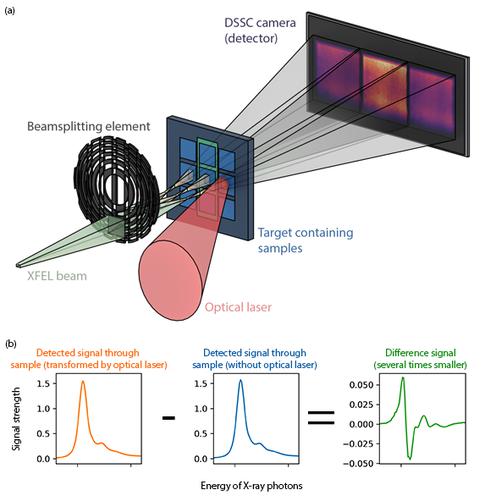XFEL: Unveiling finer details in the physics of materials
Unveiling finer details in the physics of materials
Scientists at the European XFEL’s SCS instrument routinely use a technique called transient X-ray absorption spectroscopy (XAS) to investigate materials that have applications in data storage and processing, catalysis, or in the search for room temperature superconductors. Investigating very small changes in the motion of electrons within a material’s structure on ultrashort timescales provides scientists with fingerprints of the complex processes at play within them. This helps them characterise samples that are important for energy and materials research.
Using the European XFEL’s brilliant pulses, researchers can overcome some of the issues of conventional transient XAS---such as long measurement times---but the varying intensity of European XFEL’s pulses provides its own challenges. Now, scientists at SCS have implemented a new sampling scheme for improving the efficiency of such measurements.

Fig 1: Images of the three detected signals, from the three separate beams generated by the new method described by scientists at SCS.

“We believe this technique has the potential to improve the efficiency at which XFEL scientists can probe interfaces or dilute systems on an ultrashort time scale,” says Loïc Le Guyader. “This scheme, only available at SCS, will allow us to further push the boundaries of materials and energy science.”
Publication:
Le Guyader, L., Eschenlohr, A., Beye, M., et al. (2023). J. Synchrotron Rad. 30.
http://doi.org/10.1107/S1600577523000619
Scientific contact:
Loïc Le Guyader
Tel: +49-40-8998-6708
E-mail: loic.le.guyader@xfel.eu
Press contact:
Bernd Ebeling
Tel: +49-40-8998-6921
E-mail: bernd.ebeling@xfel.eu
